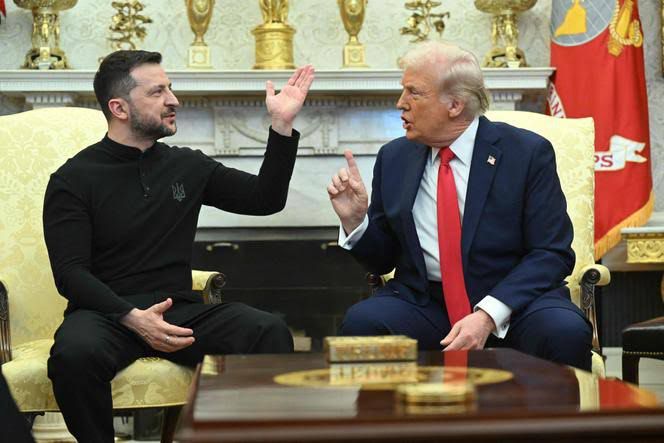In one of the most heated political confrontations that reverberated across international media, US President Donald Trump and Ukrainian President Volodymyr Zelensky of not being thankful for the country’s help in the European nation’s fight against Russia.
The fiery exchange which took place at the Oval Office, unfolded after Zelensky challenged Vance regarding the role of US diplomacy with Russian President Vladimir Putin.
The clash, which broadcaster quickly aired to an international audience, quickly escalated into a war of words. Trump and Vance questioning Zelensky’s approach towards Washington and reminding him. That Ukraine was not in a good position regarding the war.
Trump-Zelensky Fiery Exchange:
“You don’t have the card, “Donald Trump told Zelensky.
The unexpected confrontation led to the abrupt cancellation of Zelensky’s remaining meetings as well as a joint conference with President Trump at the White House. The Trump-Zelensky fallout has raised questions about the future. The US-Ukraine relationship and whether or not Washington will continue to support the war-torn country.
After the infamous Oval Office showdown, as both sides remain in the spotlight. Here is a word-to-word transcript of the exchange that took place when Zelensky challenged Vance.
The clash between Donald Trump and Volodymyr Zelensky has been characterized by tensions between the former U.S. President and the Ukrainian President, particularly over the issue of U.S. military aid to Ukraine and U.S. foreign policy.
One of the most prominent moments of this clash occurred during the 2019 impeachment inquiry of Donald Trump. The controversy stemmed from a phone call between Trump and Zelensky in July 2019. Trump was accused of pressuring Zelensky to investigate Joe Biden and his son Hunter, who had business dealing in Ukraine. This call led to accusations of Trump withholding military aid to Ukraine as leverage for political gain. Which became a central issue in Trump’s first impeachment.
Their clash exemplifies broader debates on foreign policy, inernational alliances, and how the U.S. should balance its interests with those of its partners.


